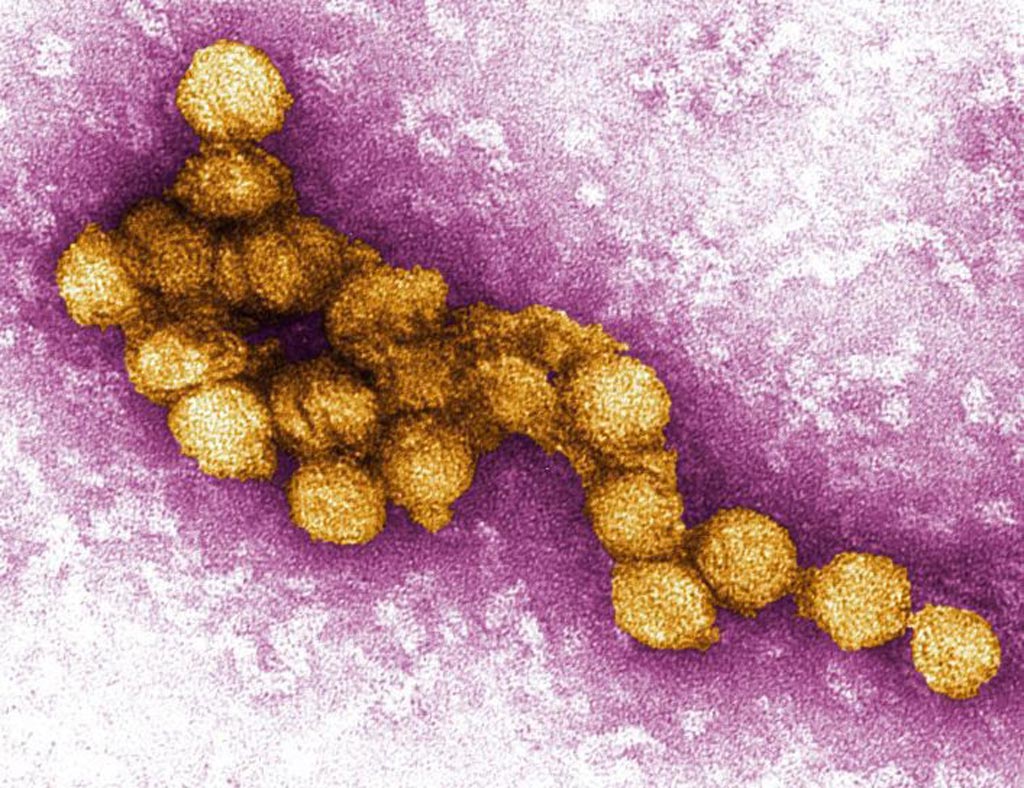Vaccine Cures and Protects against West Nile Virus
By LabMedica International staff writers
Posted on 18 Apr 2018
Treatment with a novel siRNA-based vaccine offered efficient late-stage therapy and facilitated development of natural long-term immunity against West Nile virus in a mouse model system.Posted on 18 Apr 2018
Short interfering RNAs (siRNAs) have a well-defined structure: a short (usually 21 base pairs) double-stranded RNA (dsRNA) with phosphorylated 5' ends and hydroxylated 3' ends with two overhanging nucleotides. These small RNAs can bind to other specific messenger RNA (mRNA) molecules and either increase or decrease their activity, for example by preventing an mRNA from producing a protein. RNA interference has an important role in defending cells against parasitic nucleotide sequences – viruses and transposons – but also in directing development as well as gene expression in general.

Image: A micrograph of the West Nile virus (shown in yellow) (Photo courtesy of Wikimedia Commons).
No vaccines or therapeutics have been approved for West Nile virus (WNV), a mosquito-transmitted neuroencephalitic flavivirus. The small interfering RNA siFvEJW targets a conserved sequence within the WNV E protein and limits virus infection.
Investigators at Yale University (New Haven, CT, USA) reported in the March 29, 2018, online edition of the journal Cell Host & Microbe that they had used a rabies virus-derived neuron-targeting peptide (RVG9R) and an intranasal route to deliver siFvEJW to the central nervous system (CNS). Results demonstrated full recovery by WNV-infected mice at late stages of the neuroinvasive disease.
Selectively targeting viruses in the CNS lowered viral burdens in the brain, reduced neuropathology, and resulted in a 90% survival rate at five to six days post-infection (when viral titers peak in the CNS), while placebo-treated mice succumbed by days nine to 10. Importantly, CNS virus clearance was achieved by humoral and cell-mediated immune responses to WNV infection in peripheral tissues, which also brought about sterilizing immunity against subsequent WNV infection.
"Compared to mice that were given a placebo, the mice that were administered the therapy had a 90% survival rate a few days after infection. In fact, in the mice that survived, the immune system was able to rid of the virus throughout the body and provide long-term protection. It prevents pathology in the brain and gives the mice a chance to develop a robust immune response," said senior author Dr. Priti Kumar, associate professor of infectious diseases at Yale University. "In translation, it should be an effective strategy for people."
Related Links:
Yale University













